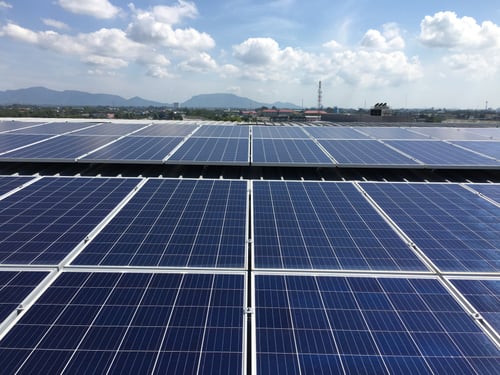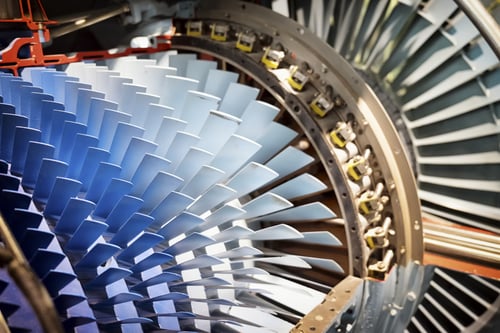Understanding the Levelized Cost of Electricity in Power Generation Systems

If you have read articles and news about the energy industry, you have surely found a metric called the Levelized Cost of Electricity (LCOE). Since it summarizes the performance of an energy generation project in a single value, the LCOE is one of them most commonly used metrics in power generation. Unfortunately, it is often misunderstood or used incorrectly.
The LCOE combines principles of engineering and finance. In simple terms, the LCOE is the break-even price for the electricity output of a generation system, assuming all project cash flows are brought to present value - it is the price at which project costs and benefits are equal in present-day dollars.
- If the LCOE is calculated for a power generation project that sells electricity, it is the minimum sale price to break even (Net Present Value = 0).
- On the other hand, when calculated for a self-generation project, the LCOE represents the minimum savings per kilowatt hour at which the project breaks even.
However, the LCOE cannot replace a detailed feasibility study with cash flow projections. It describes project costs in net present value, but provides no information on how those costs are distributed throughout the project life cycle.
Identify the best power generation option for your building.
LCOE values are useful for a quick comparison of different power generation projects. However, a feasibility study with a detailed cash flow projection is strongly recommended before investing in a specific project.
Avoiding Common Mistake When Using the LCOE
A common mistake in self-generation projects is assuming that the system will pay itself with savings just because the LCOE is lower than the electricity price. While this indicates that the net present value is positive, you should not assume that savings are achieved right away.
The following example shows how incorrect use of the LCOE value can lead to unrealistic savings calculations:
- Assume an industrial facility owner is considering a solar power system with 2 megawatts of capacity (2,000 kW).
- With the sunshine conditions at the project site, the solar photovoltaic array can deliver 2.8 million kilowatt-hours per year.
- The LCOE of the project is $0.08/kWh, while the electric company charges $0.15/kWh.
- The project cost is $2,000,000, which will be financed with a loan. The annual interest rate is 5%, and the repayment period is 10 years.
- With these loan conditions, the annual payment during the first 10 years is $254,557.24
Based only on the LCOE, a building owner can get a wrong impression about project savings. Since the LCOE is $0.08/kWh, and the project is saving $0.15/kWh, one could reach the wrong conclusion that the project saves $0.07/kWh right away. With 2.8 million kWh produced per year, this would translate into $196,000 in savings. However, this is not the case.

Consider that the LCOE is based on the entire lifetime cost of the project, typically 25 years for a solar power system. However, there is a loan to pay during the first 10 years:
- With a loan payment of $254,557.24 and an output of 2.8 million kWh, the average cost is $0.09/kWh during the first 10 years. This is higher than the LCOE.
- There are also maintenance expenses and insurance expenses, which bring the average cost to around $0.10/kWh.
- Note that project costs drop drastically once the loan is paid off, and that is why the LCOE has a lower value.
The project does not save $0.07/kWh right away. Net savings are closer to $0.05/kWh when you consider that costs are not spread evenly, and there is a loan to pay during the first 10 years. A more accurate savings estimate for year 1 would be $140,000 and not the $196,000 value based on the LCOE.
In example above the project achieves savings right away, but property owners must be extra careful if the LCOE value is only slightly smaller the electricity tariff.
- If this same project is being considered by a client who pays $0.09/kWh to the power company, the project has net losses of $0.01/kWh while the loan is being paid off.
- Unless the client is willing to wait 10 years before seeing electricity savings, the investment is not attractive.
Recommendations for Building Owners

A power generation system for a building provides an excellent way to reduce energy costs, but you must make sure that the financial performance is favorable. The best recommendation is getting a detailed assessment of your property by a qualified engineering firm, and asking for a feasibility study that includes a yearly cash flow projection.
The LCOE is very common in energy news because a single cost value per kWh is easier to understand that a detailed financial analysis. The LCOE is a useful tool when comparing energy sources upfront, but you should not use it to estimate the actual cash flow and savings in a power generation project. Just like the Net Present Value (NPV) is not equivalent to the real cash flow achieved by a project, the LCOE does not describe the actual project costs for each year.

Michael Tobias
Michael Tobias, the Founding Principal of NY Engineers, currently leads a team of 150+ MEP/FP engineers and has led over 4,000 projects in the US
Join 15,000+ Fellow Architects and Contractors
Get expert engineering tips straight to your inbox. Subscribe to the NY Engineers Blog below.

